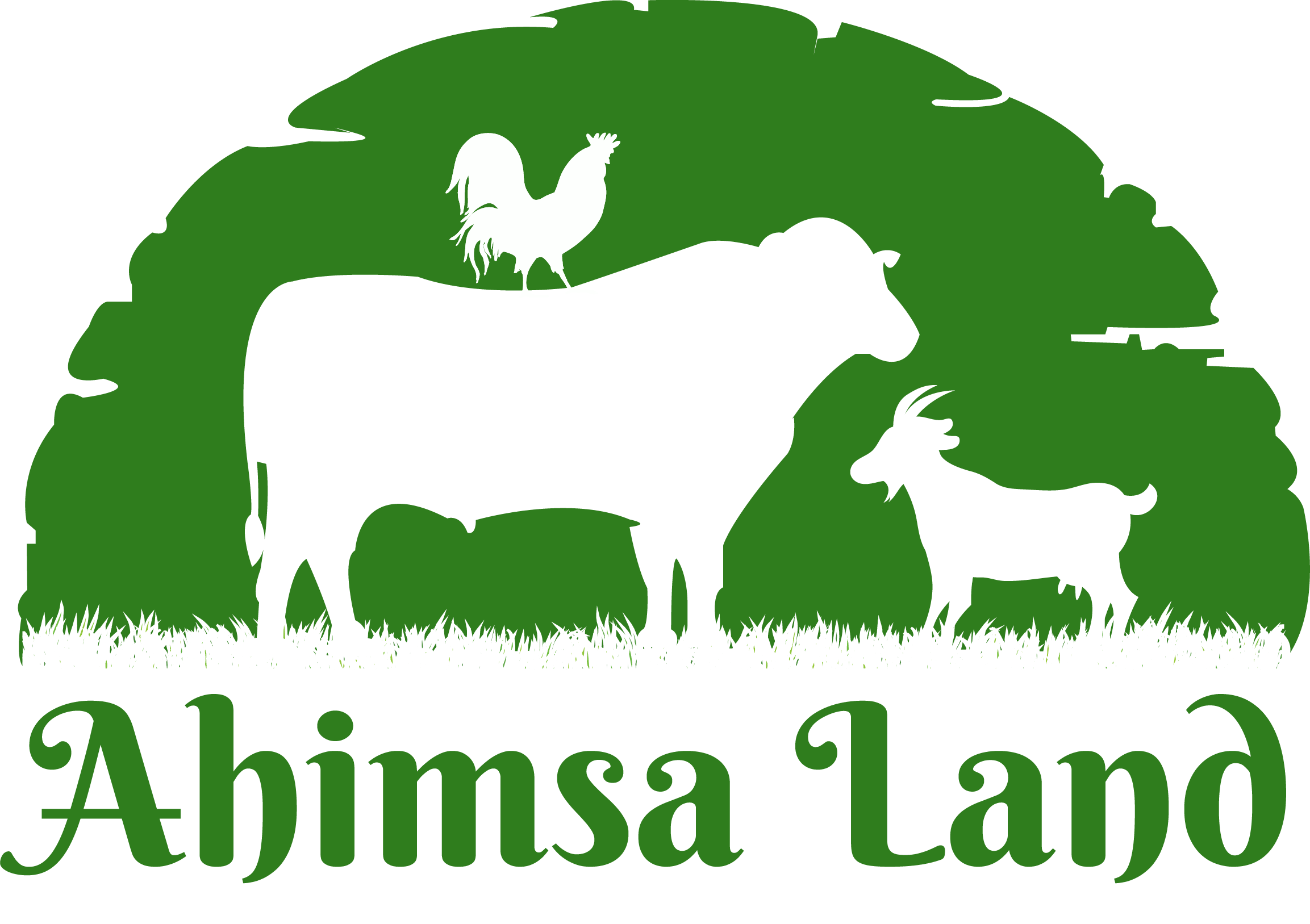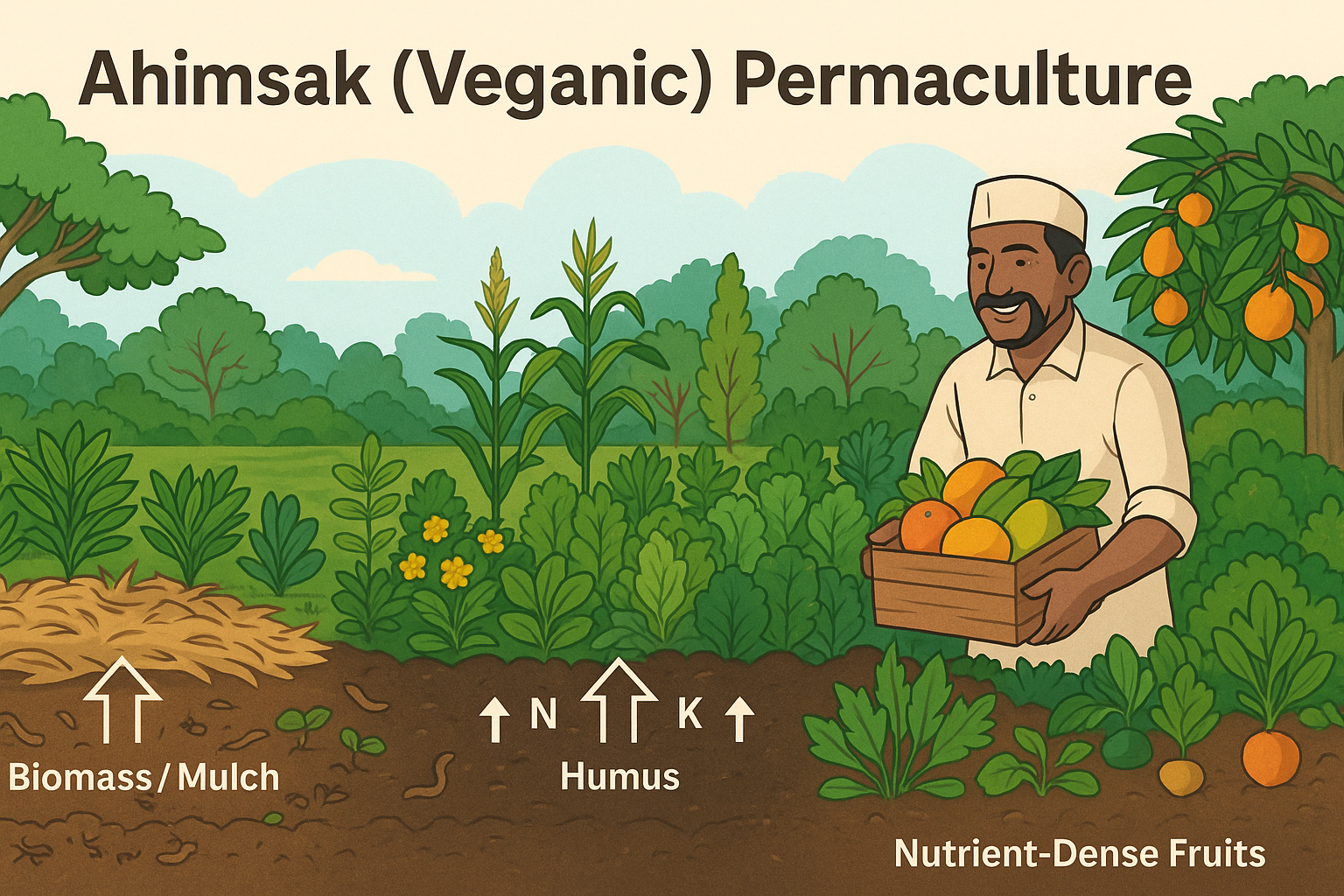
Ahimsak or Veganic Permaculture is nothing but permaculture without the use of animals or animal based inputs. It’s a way of farming that works in complete harmony with nature, and without harming animals or exploiting them in any way. At its heart, it uses mulching, living roots, and water as the only essentials needed to bring earthworms, beneficial microbes, and bacteria back into the soil. These life forms create a thriving underground network and protective microclimates that builds rich, fertile soil naturally, supports the growth of smaller plants and big trees, improves biodiversity, and provides nutrient-dense food for us.
Mimicking Nature
Trees are central to permaculture because they restore degraded soil, provide shade, attract biodiversity, and create microclimates that retain moisture and support the growth of smaller plants, bushes and creepers. The
Permaculture mimics natural ecosystems through:
- No-till farming – preserving soil structure and microbial life.
- Minimal water use – conserving resources and enhancing resilience.
- Multi-cropping – increasing biodiversity and reducing pest outbreaks naturally.
- Designing with nature – working with sunlight, wind, and water flow.
Trees play a central role in this system. They restore degraded soil, provide shade, attract wildlife, and create microclimates that help retain moisture while protecting crops.
The Basics of Permaculture in Ahimsak or Veganic Farming
Permaculture works by observing and mimicking natural ecosystems rather than imposing artificial, chemical-driven systems on the land. Its foundational principles include:
- Care for the Earth – Protect and regenerate natural systems.
- Care for People – Ensure healthy food, clean water, and community well-being.
- Fair Share – Use resources mindfully and share surpluses.
In practice, this means:
- Growing multiple varieties of crops together (polyculture or multi-cropping)
- Using natural water harvesting and soil regeneration methods
- Integrating trees, plants, and creepers into mutually beneficial systems
- Avoiding chemical fertilizers and pesticides
- Prioritizing local and seasonal crops
All this without the use or exploitation of animals.
Why Veganic?
Veganic permaculture proves that animal-based inputs like dung, cow urine, bone meal, or fish emulsion are unnecessary. Forests never receive manure or any kind of fertilizers in large amounts like we use in chemical farming, yet they grow tall, lush trees heavy with nutrient-rich fruits. So can our farmlands.
Multi-cropping naturally removes the need for pesticides because growing a variety of plants together helps insects to coexist or live in symbiotic relationships and attracts beneficial predators that keep harmful pests in check. This biodiversity creates a balanced ecosystem where no single pest can dominate. This automatically eliminates the need for pesticides like the ones used in chemical farming.
Plants, not animals, are the only living beings capable of pulling nitrogen directly from the air and combining it with sugars to create amino acids that are the very building blocks of proteins. Plant food from veganic permaculture farms are rich not only in these amino acids but also in minerals, vitamins, antioxidants and healthy fats, all without any harmful chemicals.
Soil Microbiology: Building Healthy Soil Naturally
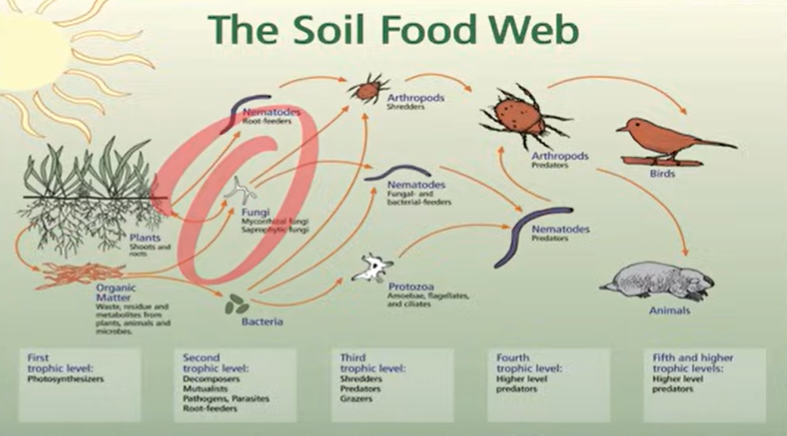
Microscopic bacteria use acids to break up dust (stone, sand or clay) to consume the minerals in them and convert them into forms that plants can absorb. Plants use the energy they get from the sun to combine water from the soil and carbon dioxide from the air to make oxygen and raw sugar. This process is called photosynthesis. The raw sugar is combined of protein, a little fat and a lot of carbohydrates. Plants release specific sugars through their roots to attract specific bacteria according to the nutrients they require. When these bacteria eat the sugars and finally die, their cells rupture and they release the minerals they had in their body for plants or trees to absorb through their roots. This is how soil accumulates essential minerals like calcium, magnesium, selenium, phosphorus, and potassium… all made available through plant-microbe partnerships. Plants and trees use these minerals in their leaves, trunk, branches to produce nutrient-dense food for us. So, all we need to do is to grow thick vegetation and trees to make our soil fertile to provide us all the food we need.
We know that trees in forests are not taken care of by humans, yet they flourish in floods and drought and are laden with plenty of fruit. What is it that nature does? Trees shed leaves and twigs that cover the soil and when the rains come, these decompose into a dark, spongy material called humus. Humus can hold up to 90% of its weight in water, pulling moisture from the atmosphere and storing it in the soil. One kilogram of humus can absorb as much as six litres of water from the air in one night. As the carbon rich biomass of leaves and twigs fallen from trees breaks down and gets converted into humus, it balances the C:N ratio (carbon to nitrogen) naturally, unlocking nutrients without any synthetic fertilizers.
How Veganic Permaculture Heals the Earth and Fights Climate Change
Veganic permaculture has a profound positive impact on the environment and climate change because it restores soil health, increases biodiversity, and eliminates the use of chemical fertilizers and pesticides. By focusing on mulching, living roots, and water, it builds humus-rich soil that stores large amounts of carbon, effectively reducing atmospheric CO₂. The no-till approach prevents soil erosion and preserves soil microbes, while multi-cropping and tree planting create resilient ecosystems and microclimates that retain moisture and cool the surrounding air. Without animal-based inputs, veganic permaculture also avoids the methane and nitrous oxide emissions linked to livestock farming, making it a climate-friendly, regenerative farming method.
Growing Food for Health & Compassion
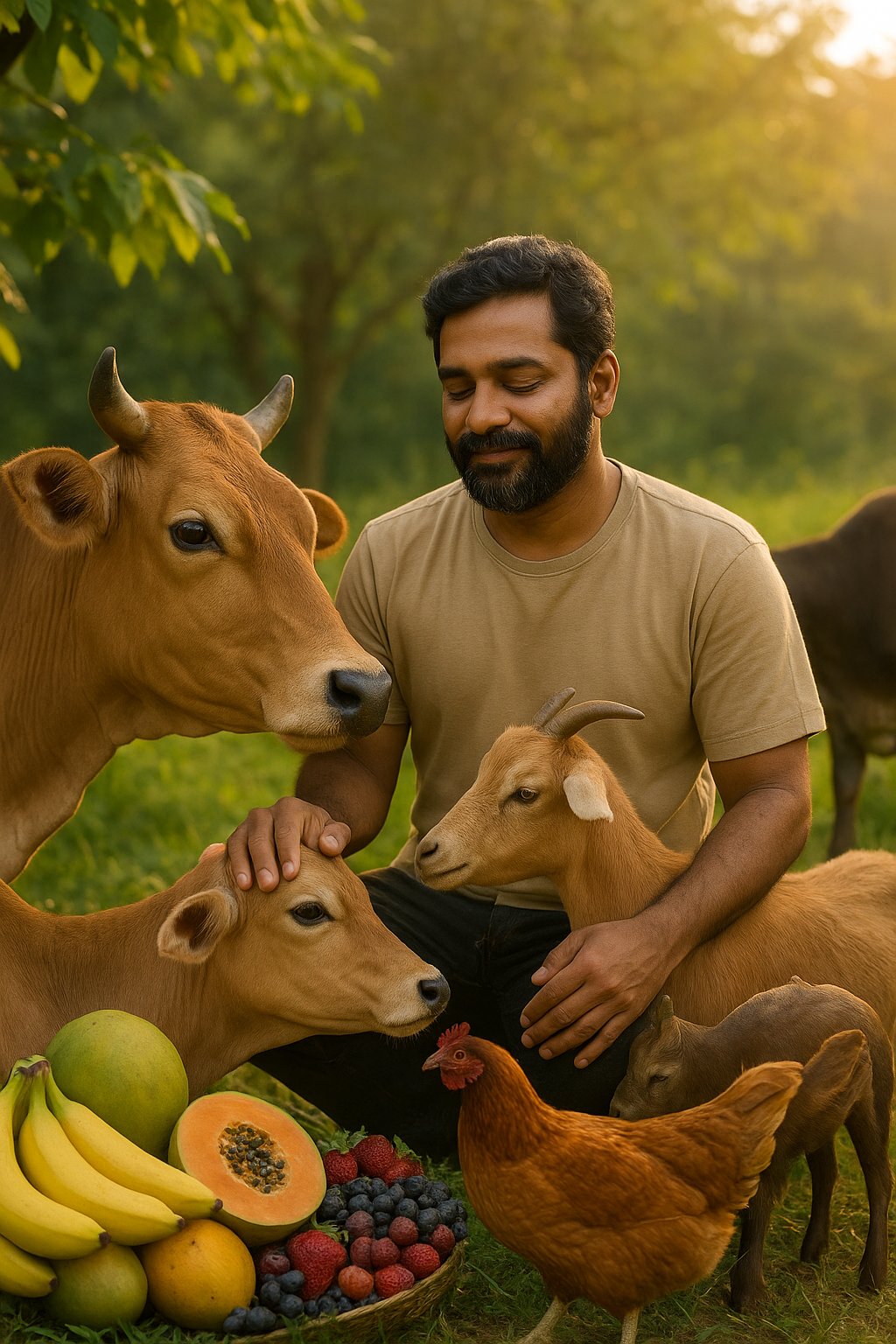
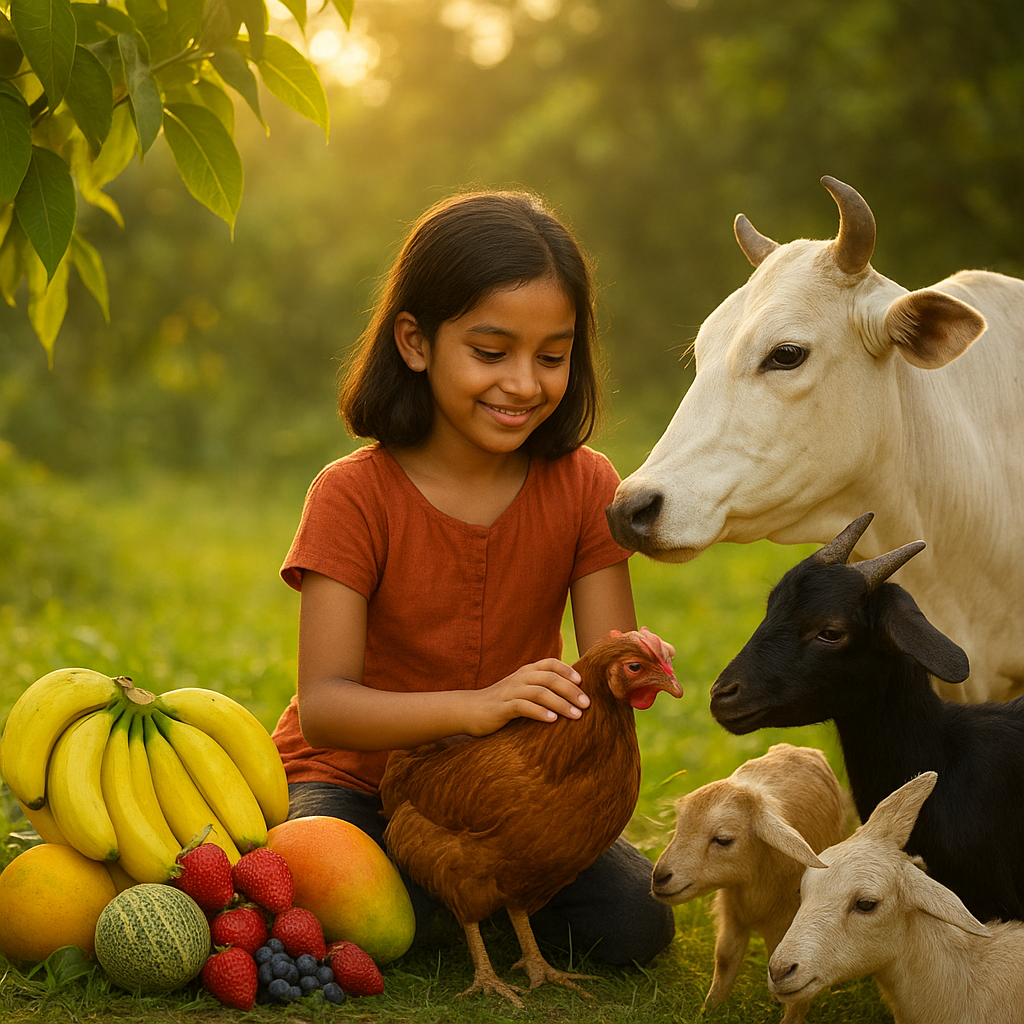
Chemical-free, nutrient-dense food grown in living soil is not only better for the planet but essential for human health. Veganic permaculture farms place special emphasis on fruit trees, as fruits are our most natural and nourishing food, packed with easily digestible sugars, amino acids, vitamins, and minerals. Multi-cropping ensures diversity, resilience, and year-round harvests without exhausting the land.
By working with nature’s cycles, protecting all life, and restoring soil health, Ahimsak Permaculture offers a path to abundant harvests, a thriving planet, and food that heals both body and conscience.
Learn More
Here’s a fantastic video that explains soil microbiology.
Learn more about permaculture in Hindi from this playlist.
